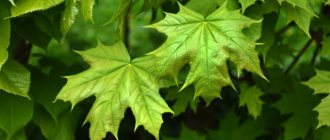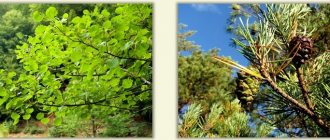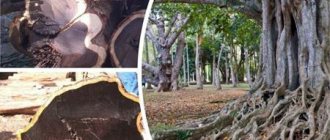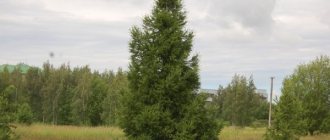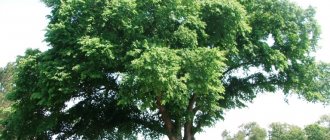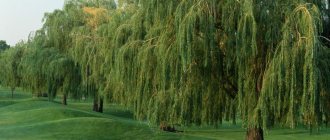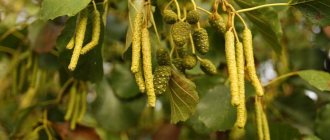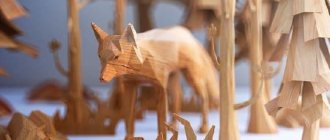New materials used for finishing premises and making furniture are in many ways not inferior to natural ones, but they cannot completely replace them. And this is connected not only with the human desire to live in a natural, natural environment, but also with the fact that artificially created components do not cope with all tasks. For example, teak is most suitable for the construction of yachts, the manufacture of garden and home furniture, and the production of decking boards. It is no coincidence that this valuable tree species is in demand all over the world - durability and beauty have determined its popularity.
Habitat
Tectona grandis, or teak (wood), also has the following names: Rangoon or Burmese tonic, Mulmein, Indian teak. Distribution area: India, South and Southeast Asia in the region of Burma, Thailand, and the Malaysian Peninsula. Due to the great popularity of teak wood products, it began to be actively grown on plantations. The differences between wild and plantation teak are in the internal color of the wood, but no fundamental differences were found in the main performance qualities.
In nature, the tree reaches a height of 40 meters, a trunk diameter of up to 60 centimeters, but in rare cases there are specimens with a diameter of 1.5 meters. Teak plantations, in addition to its traditional habitats, are located in Panama, Africa and Costa Rica.
About the color scheme
More than a dozen shades can be distinguished, and the name of the corresponding wood species is used to designate each of them. For example, the color of mahogany wood means a reddish-brown hue. Over time, mahogany wood itself acquires a richer color and becomes even more beautiful.
This is what mahogany wood looks like
Ordinary cherry is quite close to mahogany; depending on the age of the wood and growing conditions, the wood can have a shade from dark red to light with golden. So the color of cherry wood is often confused with mahogany.
Cherry can resemble mahogany
Wood itself has an excellent appearance, so often when processing it is enough to simply reveal the texture and protect the surface from fading, although no one has canceled paint treatment. Sometimes this can be used to achieve a great visual effect.
When choosing a suitable shade, you need to understand that even within the same color there are a lot of shades.
In addition, they may differ depending on the manufacturer:
- for example, the color of walnut wood in the case of a parquet board provides for a change in shade from beige to “black coffee”. But when designating paint, this designation refers to a rich brown shade;
- under the designation “pine” in the palette there is a rich yellowish color;
Note! There may be designations “young pine” - a lighter color and “old pine” - richer and slightly darker.
- but under the designation “mahogany” hides a rich paint with a dark red tint. The wood of this species has exactly this shade, hence the name;
- Wenge color is also popular in finishing; this wood is rich in color, but falls a little short of complete blackness and upon closer examination the original texture is visible. Paint, of course, will not give such an effect, but in shade it is very close to this wood;
- The color ebony is as close as possible to pure black. Ebony wood can be either jet black or deep gray in color, depending on the age and how close to the core of the trunk the sample was taken. The shades of paint in this case range from rich gray to almost black.
When choosing paint materials, you need to understand that it is not at all necessary to paint the surface until a monochromatic surface is obtained. Sometimes it is much better to simply emphasize the texture, perhaps tint the surface, but not completely paint over it
Sometimes it's better to just show the texture
Characteristics
Teak wood is very durable. Under favorable conditions, it can be preserved for centuries - some figurines found in Indian cave temples were carved more than two thousand years ago and still retain their integrity and beauty. The natural wood of this species is rich in shades, and by unraveling the log, you can enjoy the beauty of the palette from warm yellow to dark brown. Shades of gray, lemon, and ocher are also common.
Teak is a type of wood with valuable qualities. The presence of a large amount of oil and rubber content (up to 5%) in the wood structure causes smoothness, velvety, matte shine. These same substances give wood water-repellent properties, resistance to chemical damage, fungi, and various types of insects. Also, oils and other components of the material give the wood a distinct smell of old leather.
The texture of wood (teak) is in most cases straight-grained, but sometimes wavy grains can be seen. In terms of its physical and mechanical properties, this type of tree species is inferior to oak and larch, but is close to silver birch. Some experts claim that teak can be successfully replaced with ash, subject to proper processing.
Use in medicine
In addition to wood, leaves, bark, and other parts of the tree are also actively used. The medicinal properties that the oil, leaves, and teak wood itself have are very diverse and wide.
The leaves of this tree have the highest number of medicinal properties. They are used for:
- Treatment of skin ulcers and fungal diseases. The leaves have antibacterial properties, so they are often used to treat skin diseases.
- To stabilize the menstrual cycle. The dried leaves are brewed as tea and used for menstrual irregularities.
- Treatment of hemorrhages. It is also used in the form of dried powder from the leaves in the form of tea leaves.
- Treatment of sore throat (brewed as tea).
In addition to the leaves of the tree, the wood itself is also actively used in medicine. It is ground into the finest powder. The scope of its application is quite wide. This powder is used as:
- laxative;
- remedy against intestinal parasites;
- medicine for dysentery;
- for the treatment of leukoderma;
- for the treatment of certain diseases of the female reproductive system.
Teak wood powder is most widely used in Indian medicine.
Teak oil is widely used. It is used to stimulate hair growth. In addition, this oil is used to lubricate irritated areas of the skin, especially after insect bites. This oil soothes the skin and reduces itching.
The roots and flowers of the plant are used to treat urinary tract infections. They are also used as an anti-nausea remedy and to treat bronchitis.
It is believed that the bark of the teak tree can be used for diabetes.
Wood sawdust is used in Indonesia. There they are burned like incense.
Qualities
Like every tree, teak has growth rings, but unlike other wood, when cut in solid wood, they give a unique play of color, which is a distinctive feature of the material. Under the influence of the environment, the stains disappear, the color becomes uniform and darkened.
Teak wood has its advantages:
- Abrasion resistance.
- Resistant to weather conditions (tolerates moisture and dryness without damage).
- Resistant to fungus, pests, rot.
- Easily processed by hand and machine.
Flaws:
- Expensive.
- It is necessary to treat it annually with oil or open it with water-based varnishes.
- It's getting dark.
Wood's durability and long service life minimize disadvantages, since furniture or decoration made from this material eliminates the expense of repairs or replacements.
Advantages of artificial turf over teak
There are several of them: easy maintenance and repair, resistance to mechanical wear and fading, exposure to the sun and chemicals. Let's add here the ease of production, although it varies from product to product. Considering the ban on the import of teak from Burma, the availability of a plastic analogue can also be considered a plus. Among the positive qualities are light weight and better sound and thermal insulation, although when compared with teak it all depends on the thickness of the plastic (varies from 4 to 15 mm). If you're not stuck with a traditional wood deck, some synthetic materials can provide virtually unlimited possibilities for avant-garde design. For example, Esthec offers a choice of 10 primary colors plus five shades of joint sealing. With this set you can create incredibly artistic decks that Picasso himself would be proud of!
Superyacht deck with unusual patterns made from Esthec material
How environmentally friendly is faux teak?
Wood is the most environmentally friendly and endlessly renewable resource that does not conflict with the environment. The best teak trees grow in Burma, but the forests there are not certified by the Forest Stewardship Council (FSC, an international organization that monitors the chain of products from forest to consumer). Unfortunately, the reality is that cutting down tropical forests has dire consequences for the environment. On the other hand, PVC is produced from oil, which is also gradually drying up. However, many synthetic flooring uses recycled plastic (up to 100%), and in theory faux teak can be used indefinitely. The high wear resistance of PVC means that the coating will have to be changed quite rarely, and this is another plus for environmental friendliness. Maintenance is equally important: although teak does not need to be treated with harsh detergents, oils or bleaches, many captains do so, whereas plastic decks only require soap and water. In an ideal world, natural teak would be the greenest option, but in practice synthetic flooring wins.
Installing Esthec on the foredeck in one piece
Treatment
Teak (wood) is processed manually using a standard set of tools. Experts recommend further sharpening them, since the material contains a lot of essential oils. Teak wood material is less susceptible to the effects of water and fiber swelling, but decking or flooring in rooms with high humidity should be made with this possibility in mind. Prolonged exposure to an aqueous environment can damage the fibers with fungus and rot: this process mostly affects the end parts of the treated board.
Wood impregnation (teak) is contained directly in the wood structure, but additional effort is required. Teak wood, which is actively used in the production of yachts, according to experts, is annually scraped and treated with the same oil or a mixture of linseed and tung oils with the addition of beeswax. Furniture manufacturers coat the finished product with oils or water-based varnishes, which well permeate the wood structure in the mass. Furniture left outdoors without treatment will acquire a characteristic silvery coating by the beginning of the next season, which is difficult to get rid of, but the wood will not be damaged.
Teak wood, Tectona grandis, Verbenaceae family
The most terrible enemy of teak after humans. The wood of real teak acquires its golden sandy brown color when exposed to
sun and rainwater.
Teak parquet
Color differences are leveled out under prolonged exposure to the atmosphere. Fresh sawn wood has a very diverse range of colors (green, dark brown, light brown, gray-white, etc.). In the photo below, you can clearly see the difference in color between freshly cut teak and teak that has been exposed to the sun and rain.
Coating Teak with a special oil brings out its natural color.
The oil gives teak wood a deep, rich and rich color.
Teak wood without treatment with oils and varnishes becomes silver-gray.
When exposed to ultraviolet radiation and moisture in open spaces, Teak acquires a luxurious silver-gray color. Teak wood has narrow sapwood that is grayish or white in color. Wood has its own characteristic smell. Characterized by a dull shine. The average density coefficient is 0.55 (weight of dried wood/volume of freshly cut wood), which corresponds to an air-dried wood density of 670 kg/m3. The fiber is smooth stripes with periodic mineral inclusions. The wood has a pronounced texture.
The wood of old trees that have grown slowly in natural conditions is stronger and more durable than the wood of young trees grown on plantations. Young wood is more prone to splitting and water damage. It is common for plantation teak to have irregular patterns of dark stripes or spots. However, drying selected wood from plantations in special kilns makes it comparable in quality to wood from naturally grown trees.
Teak dries well, but rather slowly, shrinkage is very slight. Average shrinkage rates (when drying fresh wood in a chamber) are: radial - 2.5%, tangential - 5.8%, volumetric - 7.0%. You can air dry or oven dry. Once dried, teak retains good geometric stability.
Applications Teak is one of the most famous woods in the world due to its valuable properties - durability, strength, weight, workability and attractive appearance. Teak wood is very durable in dry and wet conditions.
Teak wood is used for the production of outdoor furniture, ship decks, and other products intended for use in difficult weather conditions. It is also used to make floors in rooms with high humidity. Teak veneer and plywood are used for elegant wall coverings in homes and offices, and for furniture finishing.
Fashionable in the 1950s and 60s, the style of teak furniture known as “Danish Modern” is now experiencing a second peak in popularity. Teak furniture is in very high demand among the types of classic furniture.
Teak wood is easy to process and a photo of a carved panel confirms this well.
Carved teak wood painting.
Teak wood contains natural oils that give it durability when used in damp areas, even without treatment with oils or varnishes. It is also resistant to acids.
In many Asian countries, teak wood is widely used for doors, window frames, furniture, columns and beams in old-style houses. Its wood is resistant to termite attacks.
The world's largest teak building is the Vimanmek Mansion in Bangkok.
U Bein Bridge, built in 1782 from teak wood and preserved to this day. The length of the bridge is about 1200 meters, the height above the water level is 3 meters.
Teak plantation in Panama.
In this photo, a teak plantation in Costa Rica.
This is what teak tree seedlings look like in a plantation.
And here are the seedlings of tiny teak seedlings (they look almost like our garden seedlings of tomatoes and other greens in the spring).
Teak (Tectona Grandis), cultivated artificially for over 100 years, is the basis for many plantations. It is considered a very valuable wood due to its ability to withstand weather conditions. It even protects any metals used in it from corrosion. Teak is very stable, which means it does not warp with changes in humidity and temperature. The teak tree has taken root well in Central America; huge teak plantations have grown in Panama and Costa Rica. Teak is not native to Costa Rica or Panama, but grows very well there. It is a pioneer among tree species, in other words, it is preferred because of its qualities and has almost no competition. After three years, the trees are large enough to shade out competing vegetation. Teak requires very good drainage and rich soil. He prefers a dry season of about three months, because his homeland is Asia. Teak grows surprisingly quickly, especially for a hardwood. On a plantation, teak seedlings grow half an inch per day! It has to be seen to be believed. Because teak grows so quickly, the plantation requires a lot of attention during the first years. When the teak sapling's trunk grows tall, you must trim the lower leaves. The most valuable trees are those that grow straight and without branches on the trunk. By trimming all the trunk except the top (about 1/3) of the leaves, it is possible to create a superior tree. Teak produces from 12 to 26 cubic meters of industrial wood per year. The price of teak has continued to rise steadily over the years, at a rate consistently above 6% per annum. Here is the approximate growth dynamics of a teak tree: After 2 years: teak tree height 5-6 meters, trunk diameter 6-8 cm. After 10 years: teak tree height 19-20 meters, trunk diameter 23-27 cm. After 15 years: height teak tree 25 meters, trunk diameter 29-32 cm After 20 years: teak tree height 28 meters, trunk diameter 35-38 cm
The extraction of teak wood from wild forests faces a number of environmental problems, in particular the disappearance of old wild trees. Mature teak wood costs very good money. Given the commercial value of this wood, there are many teak plantations around the world, producing large quantities of wood in warm climates. Experiments are being conducted on vegetative propagation of plants using annual cuttings. Most teak wood is exported from Indonesia and Myanmar.
Construction material
Teak wood is an expensive material, and the construction of houses from it is not carried out even in places where it is distributed. Since the 15th century, shipbuilders began to use its best properties. Ships made from this type of wood were durable and did not require frequent repairs or replacement of individual parts. Today, these qualities are used in the construction of luxury yachts, but the material is used for the interior lining of cabins, deck coverings, and for individual sail fastening elements, handrails are made, and so on.
Description of some types of yew
In Western Europe, the berry yew (Taxus baccata) of the yew (Taxaceae) is often found, so this species is sometimes called the European yew. This is a relatively tall evergreen coniferous tree or shrub. It can be seen in Belovezhskaya Pushcha and in the Kaliningrad region; yew feels good in the Crimea and the Caucasus. In mountainous areas it often grows as a tall shrub. Near Khosta (between Sochi and Adler) on the eastern slope of Mount Akhun there is a relict yew-boxwood grove. In 1931 it became a protected area and is now under the protection of UNESCO. In Scotland there is a very old yew berry, which is about nine thousand years old.
READ Where is boxwood used?
Yew berry
The garden forms of yew berry are varied: columnar, weeping, dwarf, squat, flattened, creeping and prostrate.
The yew needles are not needle-shaped, but flat. It is usually green or with a bluish tint, in some varieties it is silver-variegated, golden-bronze or with yellow stripes. There are varieties that change the “summer” color of their needles for the winter.
Yew variety " Summergold " has yellowish needles. In the slow-growing variety " Elegantissima ", the needles turn white by winter. This beautiful yew must be well insulated for the winter.
Among the berry yews there are low-growing shrubs with a height of only 0.5 - 1.5 m. These are “ Repandens ” (with blue-green needles, often taking on a creeping crown shape) and “ Elegantissima ”. The " Fastigiata " variety is low-growing in the Moscow region, but taller in milder climates. In winter it often freezes.
Silver Spire hybrid with a columnar crown to be one of the most beautiful . When they bloom, the needles have a yellowish border; later (especially in winter) they become bluish-silver.
The wood of yew berry is hard and heavy, red in color. It joins the large list of species belonging to the “mahogany” tree. The tree does not rot for a long time and has bactericidal properties. It has long been used to make funeral sarcophagi and religious accessories. The wood is highly polished and is used to make expensive carved furniture and jewelry boxes.
All parts of the yew tree are poisonous to people and most pets. Therefore, in some places these trees were cut down after mass poisoning of residents and livestock. There were times when enemies were specially treated to drinks poured into yew goblets. Old plants have the highest concentration of toxins.
Another species, the pointed yew (T. cuspidate), grows into a beautiful winter-hardy tree or shrub. In nature, it can be seen on Sakhalin, the Southern Kuril Islands, Korea, China and Japan. In the Primorsky Territory there is the Lazovsky State Nature Reserve, where on Petrov Island there is a grove of relict pointed yew, which is more than a thousand years old.
The pointed yew has interesting tall and semi-dwarf varieties. Dwarf Bright Gold looks beautiful . Monloo ” with a dense cushion-shaped crown on sale
Even in nurseries there are rarely seedlings of Canadian yew (T. canadensis). This winter-hardy species is represented by low shrubs from eastern North America.
Medium yew is a hybrid of berry and pointed yew, bred at the very beginning of the 19th century in the USA. He gave many wonderful varieties. For example, with a wide pyramidal crown (height 4 m, width 3 m) of the “ Hatfieldii ” variety. Unfortunately, many varieties can freeze in winter. The dwarf variety with a bright green, flattened, wide crown “ Taunton ” (“ Taunyonii ”) is distinguished by its winter hardiness.
Yew hedge
Finishing material
Teak (wood) is used very widely as a finishing material in various fields. The beauty and durability of parquet made from this precious species allows it to be admired for several generations. Wall paneling is suitable for classically designed rooms, especially for those who do not want to make frequent repairs and radically change the decor. For connoisseurs of natural materials, a lightweight finishing option in the form of veneer is available.
They veneer plywood and solid wood of more common species, which reduces the cost of the final product, but allows you to use products with a set of qualities of solid wood, such as teak. With proper processing and further use, the color of wood in veneer changes in the same way as that of a board made of solid wood, that is, it darkens.
The special qualities of wood are in demand when finishing indoor floors and outdoor terraces. Today, modular panels are manufactured that significantly simplify the installation of material, since the board or parquet dies are mounted in a module, taking into account the characteristics of the structure and behavior of wood. Teak floorboards are rarely used for interior work due to their high cost, but they allow repair work to be carried out extremely rarely, maintaining all their qualities in the long term. Reducing the cost of terrace floor finishing work is achieved by using more affordable wood, for which teak-colored wood is impregnated. Often this impregnation is made from teak oil, which strengthens the fibers and resistance to weathering.
Properties and applications of teak
Due to its resistance to rotting and low level of warping, teak is the best option for shipbuilding, and is also good as a decking board; however, given its cost, not everyone is ready to use teak as an outdoor covering. Trying to save money, they often choose plantation teak, since many sources, even authoritative ones, claim that plantation teak is in no way inferior to forest teak in its characteristics. Unfortunately, this is not so, otherwise forest teak would have stopped being cut down long ago, and only plantation teak would have been used. Nevertheless, there are decent and cheaper alternatives to teak, but this already applies to the so-called thermally modified wood, namely thermo-ash, which has a different texture and shade. Although, if we are talking about decking, then both teak and thermo-ash change their shade to silver-gray over time (several seasons). This occurs under the influence of ultraviolet radiation and precipitation. If you want to avoid this, you will have to coat the decking with oil once a year, and this is not the most practical option. If you have heard somewhere that teak darkens under ultraviolet light (sun rays), this is also a misconception, it just evens out in shade. This simple and effective method is used by all teak manufacturers. It is simply an integral part of the teak wood drying process and only takes up to a couple of weeks.
READ What didn't you know about Scots pine?
Teak is also often used as an indoor floor covering, in the form of solid teak boards and teak parquet, as a non-beaten and original option that behaves more stable than many other types of wood, and in combination with installation on Nexus brackets it becomes more budget-friendly and practical.
Another interesting area of application for teak is wet rooms, although this also has its own nuances. Teak, like any other wood, also absorbs water, but is less susceptible to deformation during the absorption of moisture. From this we can conclude that, in principle, he is not afraid of being laid in the bathroom, under certain conditions. There must be a large gap between the teak boards or dies for its expansion, which is filled with sealant, according to the principle as on the deck of a yacht. This is a very expensive and labor-intensive process, and also a handicraft one, although there are special boards designed for simpler and more practical installation (you can view them at this link). The most important principle in both cases is to protect the wood from moisture from the sides and bottom of the board. For this reason, it is not recommended to take a regular solid teak board and install it in the bathroom, since it is difficult to protect it from water entering from the side, especially if it is varnished. If we talk about practicality of use, we recommend choosing special panels made of Relax Aqua thermo-ash wood, which can even be placed in a shower stall and which are specially designed for these purposes.
| Scientific classification | Physical properties | ||
| Domain: | Eukaryotes | Average Density: | 660 kg/m³ |
| Kingdom: | Plants | Bend strength: | 85 N/mm² |
| Department: | Flowering | Compressive strength: | 51 N/mm² |
| Class: | Dicotyledons | Tensile strength: | 120 N/mm² |
| Order: | Lamiaceae | ||
| Family: | Lamiaceae | ||
| Genus: | Tectona | ||
| International scientific name | |||
| Tectona grandisL.f. (1782) | |||
| Type species | |||
| Teak | |||
Teak furniture
Furniture products made from teak wood are popular at all times. It’s not difficult to find a chair, couch or table made of this breed at flea markets. Most often, all pieces of furniture are in good condition and the most they need during restoration is replacing metal parts, sanding and coating with a protective agent. Today, outdoor furniture is the most in demand on the Russian market: it is purchased for dachas, private homes, open balconies and loggias. In most cases, these are folding structures that can be stored indoors in cold weather.
For teak folding furniture, the weak point is the fastenings, and the best option would be wooden ones. Swelling along with the rest of the structure, they hold tighter in the grooves, while the metal parts become loose, corrode and fall out.
Ways to login to the TikTok application
It doesn’t matter whether you decide to log into the TikTok application via phone or computer, for each method there are several authorization options:
- using the login and password set during registration;
- through public on VK, Twitter, Instagram, Facebook;
- via Google browser account.
Let's look at all the options in more detail so that you can choose the most convenient one for yourself.
Login via computer using an emulator
Install an emulator on your computer that allows you to use mobile applications on desktop devices. For example, Bluestacks or Nox Player are great for this. The algorithm of actions is approximately as follows:
- Downloading the emulator.
- Downloading libraries (C++, NET and others).
- Creating a virtual device and downloading a mobile application through the Google Play store.
- Login to your Tik Tok profile via computer.
In the video instructions you can familiarize yourself in detail with the steps of downloading the emulator and installing the mobile application on your PC:
Login online via browser without downloading
A window will appear in which you need to select an authorization option: using a login and password or using a valid account on social networks.
How to log into Tik Tok through your VK or Instagram page?
You can access your Tik Tok page through your VK or Instagram account. You can use a mobile app or a computer. After clicking the “Login” button, select the desired option and agree to the transfer of personal information to the music platform.
Can't login to Tik Tok
If you have forgotten or lost your account password on the TikTok website, you can only restore access through the mobile application. This feature is not available on a computer. At the bottom, go to the “Me” section and click on the registration button. If you previously logged in through a social network or Google account, the system will offer to use this option. In the case where authorization was carried out using a login and password, you need to select the link “Can’t log in?”.
Resetting your password via email
If the data matches, a letter with instructions will be sent to your email inbox. Follow the system prompts to restore access.
Reset via phone
If you have a mobile phone linked to a page on the TikTok platform, then in the recovery form go to the appropriate section. A field will appear in it in which you need to enter a number without a prefix, that is, without +7 or the first digit 8.
A short recovery code will be sent to your cell phone. Repeat it in the field that opens and then set a new password for the Tik Tok page.
Features of care
The condition for preserving teak products is prevention. Every year, before the start of the season of active use, outdoor furniture must be cleaned of dirt and dust. Sometimes it needs to be additionally sanded and coated with oil or other protective compound. It is very difficult to remove ingrained dirt from the pores of wood, so many people remove the top layer of wood and then process it, but this only applies to items that have been used outdoors. Floors, panels, furniture used in enclosed spaces do not require any special tricks: they are periodically, once every few years, covered with a protective compound.
Teak wood products and finishes are very durable and beautiful, adding a personal touch to any room in your home or outdoor space.
